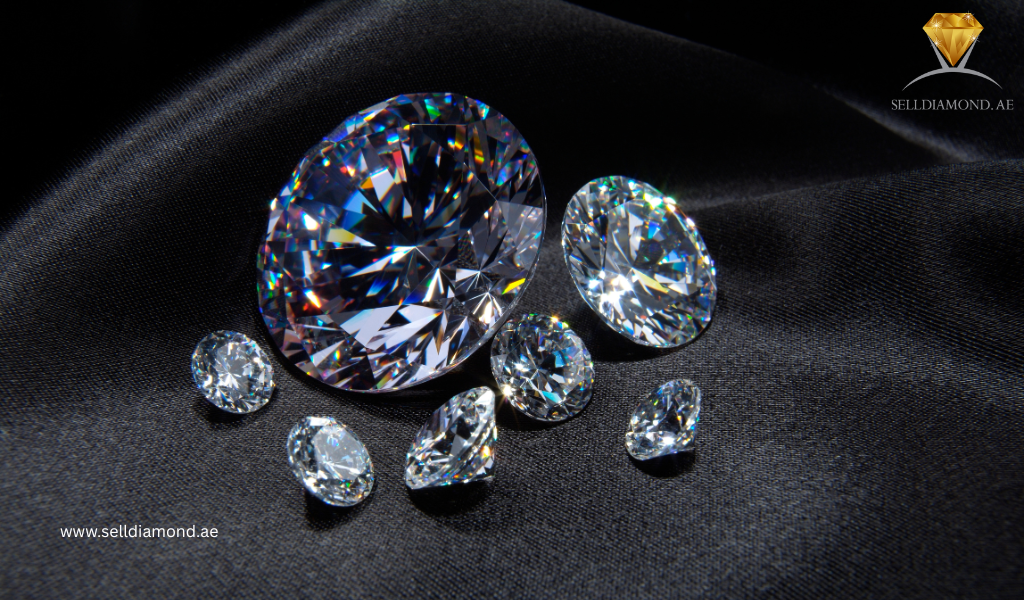Purchasing a diamond is one of life's major purchases, yet most people do it without the right information. This can result in diamond buyers overpaying, receiving lower-quality stones, or having issues when attempting to resell.
Whether you're in the market to buy an engagement ring or make a diamond jewelry investment, learning these pitfalls upfront can save you thousands of dollars and a lot of heartache. So, below are four important mistakes consumers buying diamonds make and easy solutions to avoid them. It will also help you get the maximum value and a gem you'll love for a lifetime.
Whether you're in the market to buy an engagement ring or make a diamond jewelry investment, learning these pitfalls upfront can save you thousands of dollars and a lot of heartache. So, below are four important mistakes consumers buying diamonds make and easy solutions to avoid them. It will also help you get the maximum value and a gem you'll love for a lifetime.
[1] Diamond Buyers Must Understand The 4Cs
Most diamond buyers near me purchase diamonds without understanding the 4Cs: color, cut, clarity, and carat weight. These determine the quality and price of a diamond. Cut influences the way the diamond shines. A bad cut can cause even a clear, colorless diamond to appear dull.
The cut is sometimes referred to as the most significant C since it influences a diamond's beauty the most. Color grading goes from D (colorless) to Z (light yellow). Most consumers can't detect the variation between close grades. Clarity is used to describe small imperfections within the diamond. Several imperfections cannot be detected without jewelry instruments. A VS1 or VS2 clarity rating usually appears clean to the naked eye but will be considerably less expensive than flawless pieces.
[2] Only Considering Size
A common error when buying and selling diamond is being only concerned with carat weight. Most consumers desire the largest possible stone within their budget. This usually entails selecting a diamond of poor cut, color, or clarity. Remember that a diamond with an excellent cut that weighs 1 carat may appear larger and sparkle more than a diamond with a poor cut that weighs 1.25 carats.
A good cut makes a diamond sparkle more and can make the diamond appear up to 20% larger than it really is. So, rather than concentrating on size, look for the optimal balance of all 4Cs that your budget will allow. Bear in mind that no one notices tiny differences in size, yet everyone will comment on a lackluster diamond that fails to sparkle.
Also Read:- Everything You Need To Know About Diamonds

[3] Not Heeding Diamond Certification
As diamond jewelry buyers, purchasing a diamond without certification can be quite unsafe. A certification from a reputable lab such as GIA or AGS ensures what you're purchasing is authentic and what the seller is stating. Various labs have varying standards of grading. Some are notorious for "grade inflation," causing diamonds to appear better than they actually are.
GIA is generally regarded as the most reliable and stringent.
Plus, the certificate ought to be an exact match of the diamond that you are purchasing. So, request both the stone and also the certificate be shown to you, and make sure the figures are the same. Moreover, to be good diamond buyers in Dubai always budget for the price of certification. It is an inexpensive price for peace of mind regarding your acquisition.
[4] Ignoring Diamond Shape
The diamond resale value is determined by its cut, which influences both its appearance and value. Round brilliant diamonds are the most expensive since they're the most sought-after and require more rough diamonds to produce. Other cuts, such as oval, princess, or cushion, maybe 20-40% cheaper than round diamonds of similar quality and size.
These "fancy shapes" can appear bigger for their carat weight as well. However, your decision should complement your style and the context in which you desire it. Some shapes (such as princess cuts) require additional protection in settings to protect their pointed corners. Therefore, spend time experimenting with different shapes to determine what would look best on your hand or suit your style.
To Summarize
As Diamond Buyers you must take time to educate yourself about diamonds prior to purchasing. It can save you money and ensure that you have a stone that you'll treasure. Also, steer clear of these pitfalls by knowing what's most important. This includes things like diamond quality, obtaining rightful certification, and researching for maximum value.
Remember, diamond shopping should be fun, not frantic. Fret not, with this information, you'll make an informed, smart investment that will make you smile for years to come.
FAQs on Diamond Buyers
[1] How do I know if I’m paying a fair price for my diamond?
You must obtain several appraisals from qualified gemologists and compare in-store and online prices. Also, request GIA certification and learn about the 4Cs. You can even compare prices to current market rates before you shop so you'll know what's reasonable.
[2] Is it preferable to purchase diamonds online or in brick-and-mortar stores?
Online stores tend to be cheaper since they have fewer overheads. But brick-and-mortar stores allow you to examine diamonds up close. So, ideally, research on the internet first, and then check stores to see the quality before making a choice.
[3] How much can I lose if I resell my diamond?
The majority of diamonds depreciate by 30-50% of their purchase price as soon as they are bought. To reduce losses, purchase from reputable sellers, retain all certification documents and take good care of the diamond.

